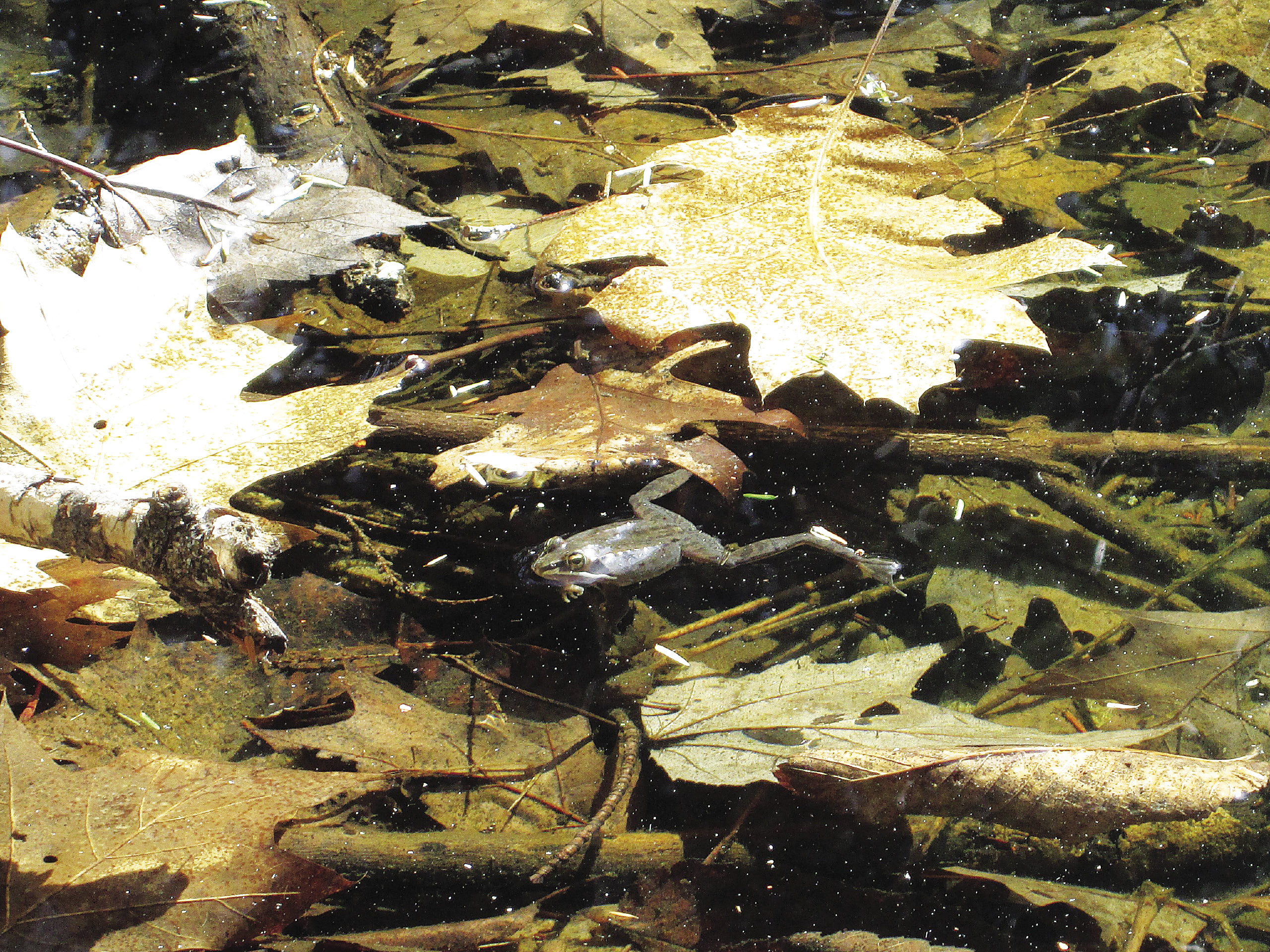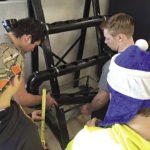Each spring, I find myself stepping outside on mild evenings to listen for the frog chorus. If my own wet woods are silent, I’ll pick a warm afternoon to ride my bike slowly down a certain stretch of road where a southwest-facing wetland always seems to thaw first. The rough quacks of wood frogs rise from pools where a skim of ice still floats. Spring peepers begin their jingle-bell chorus right after the wood frogs’ cue, and western chorus frogs are just a few beats behind.
These early singers all spend the winter frozen solid—essentially dead—in the leaf litter near their breeding pools. There, just below the forest duff, warm rains and a strengthening sun thaw the frogcicles quickly. Once awake, it’s only a quick hop, skip and jump over to the frogs’ honeymoon suites.
The woodland pools that these early-breeding frogs inhabit have one main claim to fame: because they dry up by the end of summer, they harbor no fish. Fish prey heavily on the eggs and larvae of amphibians and insects. While some species have adapted to living with fish in lakes and ponds, many types of frogs and salamanders, as well as insects and other invertebrates, have simply adapted to go where the fish aren’t.
The catch is that in a vernal pool, you have to breed early and your babies must grow fast. This requires its own set of adaptations. After spending the winter as a pool-side frogcicle, wood frogs thaw from the inside out. Some unknown trigger jumpstarts their heart before the body is even fully thawed. Breathing resumes next, and circulation begins as soon as their blood liquefies. After about five hours, their leg muscles regain some function. After 24 hours, the frogs exhibit normal body postures and coordinated muscle functions.
Just a couple days later, their mating drive kicks in. That’s when we’re treated to an almost deafening cacophony. Some frogs and toads can be as loud as a lawn mower. Luckily, they have an internal pressure system that keeps their own eardrums from vibrating excessively, and therefore prevents hearing loss in the shouter himself.
Male frogs and toads need highly developed body-trunk muscles in order to drive air over their vocal chords and produce those surprisingly loud calls. Packed with mitochondria, the powerhouses of the cells, the singing muscles have the capacity for high aerobic metabolism. Plus, frogs and toads call for such a long time that their muscles must eventually switch from burning carbs to burning fats, just like human endurance athletes.

What’s the point of all that muscle and noise? Impressing the ladies, of course! The impassioned calls draw females toward the pond. The more females their collective calling can attract, the better chance each male has of finding a mate. Wood frogs are “explosive breeders,” meaning that they gather in large numbers for a short time.
For just a few weeks, this wood frog choir will resume their performance whenever the temperature rises near 50 degrees F. and above. In the chill of early spring, this means that frogs will sing even during the day. By late spring, though, they prefer to sing on warm evenings under the cover of darkness.
Although large numbers of frogs mean increased competition, it also means greater opportunity. Amusingly, wood frogs can’t see or smell whether a party guest is male or female. Male frogs just approach everyone from behind and give them a hug. Fellow males feel skinny and give a loud croak. They are released. Females who have already mated and laid their eggs are slender but silent. They also get released. When a male frog grips a plump female—chock full of eggs—he hooks his thumbs around in front of her and doesn’t let go. This is called “amplexus.”
Fertilization happens externally as the female deposits her eggs in a floating mass. Here, too, explosive breeding is useful. When many wood frogs lay their eggs together, the eggs in the center gain protection from predators, absorb heat and develop faster. In a vernal pool with a limited lifespan, anything that hastens development is beneficial. Eggs laid in the cold infancy of spring mature slowly, over the course of a month. That’s ok, because the pools also evaporate slowly then. By late spring, though, the eggs may hatch in only 10 to 14 days, and the larvae must waste no time in developing landlubbing lungs and legs before the waning wetland disappears.
If you miss the early spring chorus, don’t worry; there are 14 species of frogs and toads in Minnesota, and they all wake up and begin singing their songs in a typical order each year. While an early spring will find wood frogs breeding as early as March, you’ll still be able to hear green frogs, bullfrogs and mink frogs near your favorite lake or wetland in July. Click here to hear some frog sounds.




